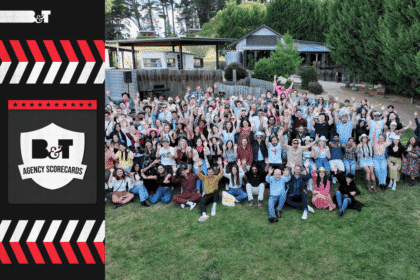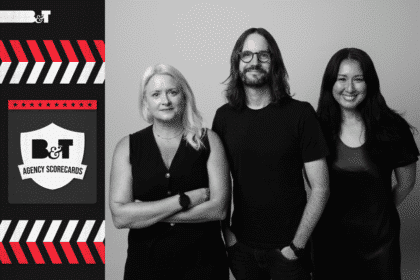The consumer shift to digital media has accelerated in the past 12 months, with online channels now set to take a greater share of retail, and TikTok’s expansion into social commerce being an even greater challenge to established platforms like Facebook.
These findings by WARC, the international marketing intelligence service, are included in the latest Global Ad Trends report: COVID-19 One Year On, which outlines the new, long-term shifts in e-commerce, social media, online video and gaming for brands and consumers.
E-commerce: $900bn more was spent at online retailers last year
Nearly $1trn more was spent at online retailers last year, per the Mastercard Economics Institute, and the move to online retail has engrained long-term habits. Brands are investing more in e-commerce advertising, which grew far ahead of the wider online ad market last year.
This trend is set to continue even as high street footfall increases in 2021 and major players like Amazon become more attractive – data from Earnest Research show 59% of new COVID-19 Amazon customers were still buying with the company at the end of 2020, the highest retention rate in American retail.
The growing popularity of ‘buy online for pickup in store’, which has seen over a quarter of adults in the US (26%), Mexico (28%) and India (33%) using the service more, indicates flexibility and convenience will be a key consumer strategy in the future.
Social media: TikTok was the social winner of 2020 – user activity doubled and brands are upping their investment
Driven by entertaining content, TikTok is now the social app with the highest level of user activity, having overtaken Facebook for the top spot in Canada (TikTok users spend 17 hours a month on the app), France (17 hours), the UK (20 hours) and the United States (22 hours), per App Annie.
Findings included in WARC’s Marketer’s Toolkit 2021, based on a survey of over 1,000 marketers, show that 44% of brands expect to increase spend on TikTok this year, ahead of Facebook’s 39%.
Online video: Linear TV advertising falls an estimated $34bn as YouTube, social video and brand integrations lure ad budgets away
Online video is eroding linear TV advertising and now accounts for a quarter (26%) of the global video ad market. Digital platforms like YouTube are becoming more popular, with audiences now watching over 20 hours of mobile content each month, according to App Annie. More than a quarter (27%) of YouTube consumption is via connected TV devices, which now poses a direct challenge to linear TV activity.
Audiences are less concerned with these distinctions, though, and care more about quality content than the delivery platform – one in five (20%) consumers globally sees no difference between YouTube and linear TV consumption, per AudienceProject research. This rises even higher in the US (36%) and the UK (27%).
Gaming and esports: Brands tap into sponsorships, mobile creative and celebrity collaborations as audiences expand
Gaming and esports audiences grew rapidly last year, with streaming platform Twitch approaching three million monthly viewers worldwide. Audiences are also more receptive to advertising in exchange for in-game benefits, and gamers are 7% more likely to buy from brands they have seen advertised, according to GWI. This rises to 15% in Japan, 10% in China and 9% in India.
Esports sponsorship is expected to grow 11.6% this year and top $600m for the first time, per Newzoo forecasts. The creative opportunities for brands extend beyond this, ranging from celebrity collaborations and partnerships. However, a third (35%) of marketers say gaming is not an area of higher focus in 2021, suggesting a potential missed opportunity for some.
Rob Clapp, Senior Analyst, WARC Data, and author of the research, said: “The media disruption from COVID-19 was rapid and severe, but the data suggest that brands were largely able to adapt to the immediate shifts in consumer behaviour. The clear correlation between changes in user activity and advertising spend shows how digital media has benefitted.
“The main takeaway for brands has been a greater focus on agility, innovation and effectiveness, a trend that is likely to perpetuate digital media’s rapid growth in 2021 and beyond.”
Consumer attitudes to advertising reveal a preference for TV over social media
Included in this edition of Global Ad Trends is an analysis ofconsumer attitudes to advertising, digital media, brand safety, and data-driven targeting in the UK and the United States, as measured by target audience company GWI in collaboration with WARC.
The latest research finds:
- Younger audiences want to connect with advertising on an emotional level, while older audiences look for product information.
- 34% of consumers say TV advertising is ‘entertaining’ and 30% ‘informative’ compared to 17% and 19% respectively for social media advertising.
- 53% of consumers say an excessive number of ads negatively impacts their view of the brand.
- Younger audiences are easily distracted online – one in two (49%) say they regularly switch between multiple smartphone apps.
- The largest consumers of digital media are most resistant to targeted advertising, undermining one of the main benefits of digital TV and audio campaigns.
Regional findings from Global Ad Trends: COVID One Year On
Americas
- E-commerce tripled its share of retail sales in Argentina (to 10%) and doubled its share in Canada (25%) and the US (22%) during the peak of COVID-19 in 2020.
- Mobile audiences in Brazil and Mexico now spend 25 hours watching YouTube content each month.
- TikTok user activity more than doubled in Mexico (139%), Argentina (115%) and Brazil (106%) last year.
Asia Pacific
- E-commerce doubled its share of retail in Australia (to 11%) and India (10%) during the peak of the crisis last year.
- YouTube consumption grew quickest in Asia Pacific last year, rising 19%.
- Chinese Tmall food sales struggled at the end of 2020, dropping 62% in December.
Europe, Middle East and Africa
- UK leads the region in e-commerce’s share of retail (at 24%), followed by France (12%) and Germany (10%). Russia (7%) and Italy (5%) are further behind.
- EMEA saw the quickest growth in TikTok user activity last year, up 103%.
- Gamers in Saudi Arabia and Israel are most receptive to advertising – they are 16% and 15% more likely to buy brands they have seen advertised, respectively.








